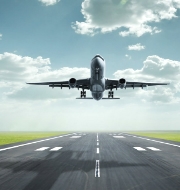Key Current Issues in Civil Aviation and problem of Air India
The civil aviation industry has recently been suffering from several setbacks. Ranging from lack of sufficient airports to lack of adequate safety infrastructure, the problems have been wide ranging even in the light of an increase in air traffic.
Key Issues
Some of the main challenges to the civil aviation industry are:
- Financial distress-Today, most of the civil air carriers of India are suffering from huge financial crunch. A study indicates that the leading airlines of India have suffered a loss equivalent to $1.65 billion between the years 2012 and 2013. Many of the good carriers like Kingfisher and MDLR stopped their operations owing to huge debts.
- Cost of operation-Although the government calls for an increase in the foreign investment of airlines in Indian carriers, the operating cost discourages many. India has one of the highest airline fuel costs in the world. This is due to an import of huge amount of Aviation Turbine Fuel (ATF) and monopolization of price setting by PSUs in exclusion of other private sources.
- Size of aircraft fleets-A major problem for the airlines in India is that the size of their fleets is very small for the domestic or international destinations. This affects the cargo traffic to a great extent.
- Unclear role of government-The role played by government has come up to question after its failure to resolve the status of Kingfisher airlines even after so many months. This has mainly affected the Indian carriers who lease aircrafts. The Government had signed the Cape Town Agreement that requires an assurance to be given to the financiers of the aircrafts that on default they will be able to repossess their airplanes. When Kingfisher ceased operations in 2012 the lessors to Kingfisher started facing several legal and bureaucratic hurdles as they were called upon to pay the dues to the tax authorities and the airports that Kingfisher owed. But in terms of recovery, only progress upto two aircrafts have been made so far.
- Safety infrastructure-Various international authorities like the International Civil Aviation Organization (ICAO) has raised several concerns on the safety measures undertaken in the Indian aircrafts. These include a lack of well trained aviation specialists and proper supervision of aircraft repairs.
- Foreign Direct Investment-Although Foreign Direct Investment in civil aviation has been relaxed by the Government in 2012, it is surrounded by huge uncertainties. The allowance has been extended to 49% FDI but it could not attract prompt investment due to competing bureaucracies and delay in approvals. One example is that of UAE based Etihad Airlines willing to have a 24% stake in Jet Airways. But its efforts failed due to a huge number of interventions from a large number of government agencies like the Prime Minister’s Office, Securities and Exchange Board of India, Competition Commission of India, Foreign Investment Promotion Board and the Cabinet Committee on Economic Affairs. They have intervened to force in changes in the commercial deal.
Plight of Air India
The abysmal position of Civil Aviation is best explained through the plight of the only government owned airlines-Air India. As per the data of 2015-16, the airlines has incurred a loss of Rs 2636 crore. The government is forcefully pushing in funds to keep the airlines intact. The airline is also highly indebted of Rs 50,000 crore as of 2015. The competitive position of the airline has been steadily declining from 35% share in civil aviation in 2007 to only 16% share in 2016.
There had been a proposal by IndiGo, the only profit making civil aviation company to buy Air India through a process of systematic disinvestment. But the proposal has been postponed considering the cost that IndiGo has to undertake to buy a company having such debts. The move has also been taken well by the IndiGo executives and employees who fear that all their efforts of developing the airline company will go in vain. Thus, there is a huge chance of dropping of the proposal.
The Way Out
Inspite of the hardships, India’s civil aviation sector is on the verge of becoming one of the largest in the world, thanks to the liberalization policy of 1994, which allowed privatization of this sector. The Tata Groups has come up with the proposal of entering the civil aviation sector through Air Asia and the proposed Tata Asia India and Tata SIA Airlines is an example of the success of the FDI Policy. So, if the Government comes up with a comprehensive aviation policy that addresses the problems stated above it can achieve a good competitive position in the world. Further, the safety infrastructure must be improved considerably especially after witnessing the incident of airport suicide bombings in Brussels. There is a need for extending CISF security in all the major 27 airports from the current coverage of only 8 airports. Most importantly, the budget allocations to the civil aviation sector must be increased.


